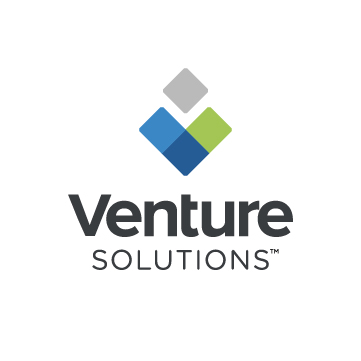
Sep 16, 2024 5:35:47 PM
As you read in our recent blog post, RFPs are vital to the success of our business. The trends we’ve seen of increased volumes YOY and greater complexity are not unique. Recent research shows that successful businesses have to address more demands quickly, accurately, and persuasively while also mitigating the risk of sharing incorrect or outdated information.


|
Leader Strategies for Growth |
How is Venture Solutions already implementing these? |
How can we improve? |
|
Elevate Strategic Response Management as a business-critical priority:
|
Our strategic response team is already heavily involved in go-to-market strategy just by nature of managing proposals through the marketing team. Their responsibilities are not only to coordinate strategic responses but to shape how our solutions are presented to clients from the very beginning. They are plugged into the messaging from the first attempts to build awareness to the final stages of closing a deal. This perspective allows them to apply a consistent and reliable brand voice within our proposals and other responses, driving brand authority within client perception. |
Although the proposal team does present ongoing status updates of active RFPs to the growth leadership team, there is certainly room for improvement in how they present outcomes of these responses in relation to overall organizational success, business priorities, and involvement of SME resources. Many of the tools and processes needed to support strong business growth are in place, but they require consistent and committed buy-in across the organization to realize those results. |
|
Provide sufficient education to others in the organization on the role of SRM and the importance of their involvement:
|
Our recent training on how to use the Responsive tool is available in Workday for anyone who needs a better understanding of the resources we use, our process when responding to client requests, and expectations for SMEs involved in these responses. We also have a Response Management channel within the Marketing Hub with additional resources for all response participants, including a detailed workflow of the response process and individual responsibilities. |
There are still many SMEs who express confusion on their role and responsibilities within the response process, so further research is needed to identify where these gaps between available resources and SME awareness exist to help connect them to these critical support resources. More collaboration would also greatly benefit the efficacy of our response process. SME input and feedback is vital to ensuring optimal procedures that are easy to follow consistently and encourage ongoing participation with responses. |
|
Drive executive and cross-functional alignment with two-way communication between executives and proposal teams in addition to deepened relationships with SMEs:
|
The main goal of kick-off calls and keeping communications within a single channel throughout the project is to ensure we are seeking input and guidance from leadership and SMEs. The expertise of individuals and high-level strategic insights are essential to keep responses in alignment with organizational goals. We rely on the initial evaluations by the Solution Architect team for an official go/no-go determination by leadership. |
Communication between leaders, SMEs, and proposal team members is strong at the start but historically falls off closer to the due date as demand for time and attention increases in other day-to-day functions. Moving toward a more official review step between finalization of the package and submitting it to the client ensures more eyes on the proposal and reduces risk of overlooking misalignment with the overall strategy. However, this will also mean all participants must commit to meeting the assigned internal deadline. Fostering a greater sense of ownership among the different SMEs of their assigned content would strengthen the authoritative tone in our responses and encourage ongoing upkeep of the library. Their expertise is at the core of these responses, so having their input on the information within our library is what makes it such a valuable resource. |
|
Extend best practices with scalable, reliable, and efficient SRM tools with secure AI functionality:
|
One of the biggest contributors to our process improvements in recent years was the introduction of a response management tool: first known as RFP360 which was then sunsetted and transitioned over to the far more powerful Responsive platform. This is an essential resource to our team that automates workflows, facilitates collaboration, and centralizes approved content for easy access and reuse. Due to the nature of our business, we do not see the value of introducing generative AI capabilities to content creation. However, the basic capabilities of the Responsive tool are already powered by less flashy or buzzwordy AI functions: it allows us to rapidly map out responses, assign questions to SMEs, apply approved content the tool recommends from our library, automate workflows between author tasks and project reviewers, and keep the content library up to date with outdated content flagged for review automatically. |
Better familiarity and confidence in SME usage of the Responsive tool will allow us to leverage its capabilities to the fullest. There is still plenty we can be working toward in terms of adhering to best practices, committing to regular reviews of content, and more. The end goal of repeating these processes is that one day we can get to a place where the Auto-Respond tool is a reliable option to save both the proposal team and SMEs time and effort responding to questions with only the need to review and confirm appropriate responses. This will let us minimize most manual answering either the RFP admin or an SME does today. |
|
Define and report on the right metrics to improve processes and identify growth opportunities:
|
The proposal team has made a point within the last year to build out more robust data tracking for all responses; the hope of these efforts is to produce more granular reporting that will provide insights that can help us further improve our processes and response strategies. This includes keeping records of the types of questionnaires included in responses to track trends and tying estimated values of potential deals to these projects to allow us to better understand what impact responses have on our annual revenue. We also used this information to build out a repository of client references to better match prospective clients with current clients who have rated us highly in their Voice of the Customer survey responses. |
The data readily available to the proposal team is limited to only that tracked within Responsive itself or within response materials/correspondence. There are many processes both during and after the completion of a response that are not visible to the proposal team, like the exact numbers behind profitability analysis or sometimes even the final client decisions unless they are intentionally shared with the team. Greater cross-functional transparency will not only allow the proposal team to better track trends in responses and their outcomes but will also allow them to share insights back to those other teams to help them make data-driven decisions on their own processes. |

© 2025 Venture Solutions Inc. All Rights Reserved